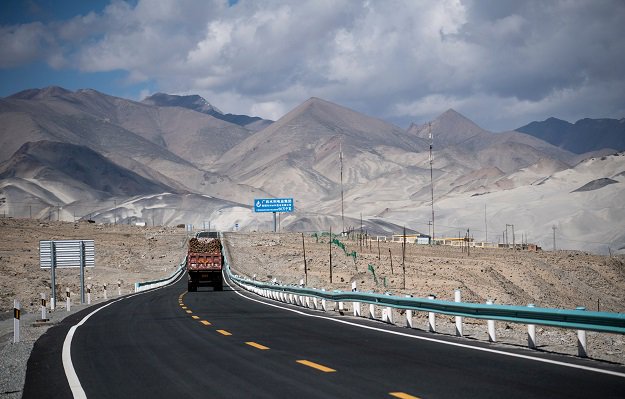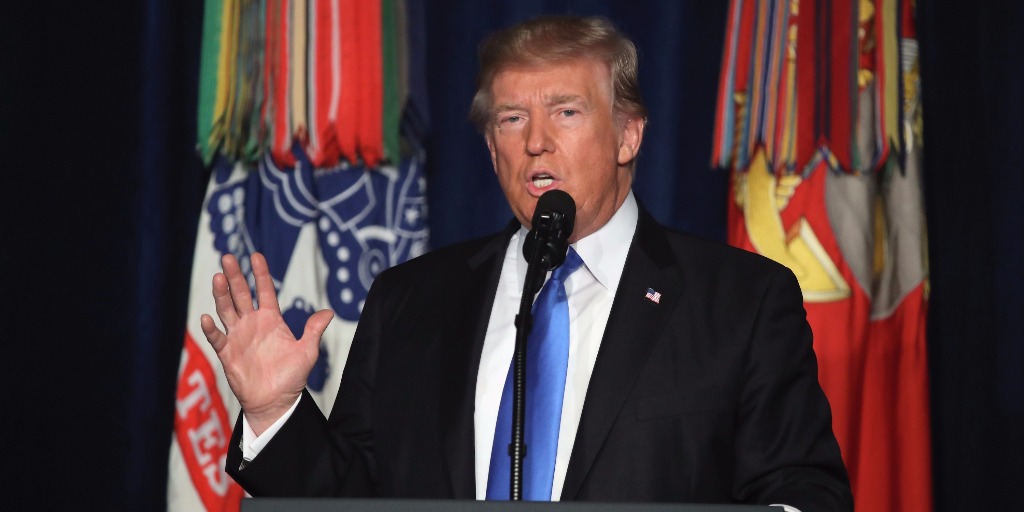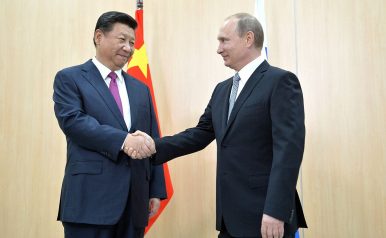ADVANCEMENT OF TECHNOLOGY, ECONOMY AND JOBS
-- Maj Gen PK Mallick, VSM (Retd)
A succession of technologies—the Internet, the cloud, big data, robotics, machine learning, and now artificial intelligence—together powerful enough that economists agree we are in the midst of a digital economic revolution. There is less agreement on how exactly the new technologies are changing the economy and whether the changes are deep. The economy has arrived at a point where it produces enough in principle for everyone, but where the means of access to these services and products, jobs, is steadily tightening. So this new period we are entering is not so much about production anymore—how much is produced; it is about distribution—how people get a share in what is produced.
in the 1970s and ’80s, arrived integrated circuits(IC). tiny processors and memory on microchips that miniaturized and greatly speeded calculation. Engineers could use computer aided design programs, managers could track inventories in real time, and geologists could discern strata and calculate the chance of oil. The economy for the first time had serious computational assistance. Modern fast personal computation had arrived.
In the 1990s and 2000s, came the connection of digital processes. Computers got linked together into local and global networks via telephonic or fiber-optic or satellite transmission. The Internet became a commercial entity, web services emerged, and the cloud provided shared computing resources. Everything suddenly was in conversation with everything else. It’s here that the virtual economy of interconnected machines, software and processes emerges, where physical actions now could be executed digitally. And it’s also here that the age-old importance of geographical locality fades. Modern globalization had arrived and it was very much the result of connecting computers.
2010s brought us sensors. We have radar and lidar sensors, gyroscopic sensors, magnetic sensors, blood-chemistry sensors, pressure, temperature, flow, and moisture sensors, by the dozens and hundreds all meshed together into wireless networks to inform us of the presence of objects or chemicals, or of a system’s current status or position, or changes in its external conditions. It lead to the development of methods, intelligent algorithms, for recognizing things and doing something with the result. And we got computer vision, the ability for machines to recognize objects. We got natural-language processing, the ability to talk to a computer as we would to another human being. We got digital language translation, face recognition, voice recognition, inductive inference, and digital assistants. Computers could suddenly do what we thought only humans could do—association.
External Intelligence. It means the ability to make appropriate associations, or in an action domain to sense a situation and act appropriately. When intelligent algorithms help a fighter jet avoid a midair collision, they are sensing the situation, computing possible responses, selecting one, and taking appropriate avoidance action. Intelligence is no longer housed internally in the brains of human workers but has moved outward into the virtual economy, into the conversation among intelligent algorithms. It has become external. The virtual economy is not just an Internet of Things, it is a source of intelligent action—intelligence external to human workers.
This shift from internal to external intelligence is important. When the printing revolution arrived in the 15th and 16th centuries it took information housed internally in manuscripts in monasteries and made it available publicly. These greatly accelerated the Renaissance, the Reformation, and the coming of science. Printingcreated our modern world.
Now we have a second shift from internal to external, that of intelligence, and because intelligence is not just information but something more powerful—the useof information. We don’t yet know its consequences, but there is no upper limit to intelligence and thus to the new structures it will bring in the future.
How this changes business
The new intelligence capabilities like face recognition or voice verification to automate current products, services, and value chains can be used by new companies. Businesses can reach into and use a “library” or toolbox of already-created virtual structures to build new organizational models. One such structure is the blockchain, a digital system for executing and recording financial transactions; another is Bitcoin, a shared digital international currency for trading. These are not software or automated functions or smart machinery. Think of them as externally available building blocks constructed from the basic elements of intelligent algorithms and data.
The result, whether in retail banking, transport, healthcare, or the military, is that industries aren’t just becoming automated with machines replacing humans. They are using the new intelligent building blocks to re-architect the way they do things. In doing so, they will cease to exist in their current form. Some large tech companies can directly create externally intelligent systems such as autonomous air-traffic control or advanced medical diagnostics. Others can build proprietary databases and extract intelligent behavior from them. But the advantages of being large or early in the market are limited. The components of external intelligence can’t easily be owned, they tend to slide into the public domain. And data can’t easily be owned either, it can be garnered from nonproprietary sources. We will see both large tech companies and shared, free, autonomous resources in the future. And if past technology revolutions are indicative, we will see entirely new industries spring up we hadn’t even thought of.
Where does it Lead
The autonomous economy is steadily digesting the physical economy and the jobs it provides. It’s now a commonplace that we no longer have travel agents or typists in anything like the numbers before; even high-end skilled jobs such as radiologists are being replaced by algorithms that can often do the job better. Mr Watson!
Economists don’t disagree about jobs vanishing, they argue over whether these will be replaced by new jobs. Economic history tells us they will. The automobile may have wiped out blacksmiths, but it created new jobs in car manufacturing and highway construction. Freed labor resourcesalways find a replacement outlet and the digital economy will not be different.
Is It?
When automotive transport arrived, a whole group of workers—horses—were displaced, never to be employed again. They lost their jobs and vanished from the economy. Offshoring in the last few decades has eaten up physical jobs in rich countries, jobs that were not replaced. The current transfer of jobs from the physical to the virtual economy is a different sort of offshoring, not to a foreign country but to a virtual one. If we follow recent history we can’t assume these jobs will be replaced either. Technological unemployment has many forms.
John Maynard Keynes’ in his 1930 lecture, “Economic possibilities for our grandchildren predicted that in the future, around 2030, the production problem would be solved and there would be enough for everyone, but machines (robots, he thought) would cause “technological unemployment.” There would be plenty to go around, but the means of getting a share in it, jobs, might be scarce. We have reached a point where technological unemployment is becoming a reality.
The problem in this new phase is not quite jobs, it is access to what’s produced. Jobs have been the main means of access for only 200 or 300 years. We have entered a different phase for the economy, a new era where production matters less and what matters more is access to that production: distribution, in other words—who gets what and how they get it. We have entered the distributive era.
A New Distributive Era
The criteria for assessing policies will change. In the distributive economy, where jobs or access to goods are the overwhelming criteria, economic growth looks desirable as long as it creates jobs. The criteria for measuring the economy will also change. GDP and productivity apply best to the physical economy and do not count virtual advances properly.
Free-market philosophy will be more difficult to support in the new atmosphere. It is based on the popular notion that unregulated market behavior leads to economic growth. The winners need to compensate the losers. That’s distribution, and overall everyone is better off. In the United States and Britain, those who lose have rarely been compensated. In earlier times they could find different jobs. In the distributive era free-market efficiency will no longer be justifiable if it creates whole classes of people who lose.
The new era will not be an economic one but a political one. Iin the United States and Europe, workers who have steadily lost access to the economy as digital processes replace them, have a sense of things falling apart, and a quiet anger about immigration, inequality and arrogant elites.. Production, the pursuit of more goods, is an economic and engineering problem; distribution, ensuring that people have access to what’s produced, is a political problem. So until we’ve resolved access we’re in for a lengthy period of experimentation, with revamped political ideas and populist parties promising better access to the economy.
This doesn’t mean that old-fashioned socialism will come back. New political parties that offer some version of a Scandinavian solution: capitalist-guided production and government-guided attention to who gets what may emerge. Whether we manage a reasonable path forward in this new distributive era depends on how access to the economy’s output will be provided. One advantage is that virtual services are essentially free. Email costs next to nothing. What we will need is access to the remaining physical goods and personal services that aren’t digitized.
For this we will still have jobs, especially those like kindergarten teaching or social work that require human empathy. But jobs will be fewer, and work weeks shorter, and many jobs will be shared. We will almost certainly have a basic income. And we will see a great increase in paid voluntary activities like looking after the elderly or mentoring young people.
We will also need to settle a number of social questions: How will we find meaning in a society where jobs, a huge source of meaning, are scarce? How will we deal with privacy in a society where authorities and corporations can mine into our lives and finances, recognize our faces wherever we go, or track our political beliefs? And do we really want external intelligence “helping” us at every turn: learning how we think, adjusting to our actions, chauffeuring our cars, correcting us, and maybe even “nurturing” us?
Hope
All these challenges will require adjustments. But we can take consolation that we have been in such a place before. In 1850s Britain, the industrial revolution brought massive increases in production, but these were accompanied by unspeakable social conditions, rightly called Dickensian. Children were working 12-hour shifts, people were huddled into tenements, tuberculosis was rife, and labor laws were scarce. In due time safety laws were passed, children and workers were protected, proper housing was put up, sanitation became available, and a middle class emerged. We did adjust, though it took 30 to 50 years—or a century or more. The changes didn’t issue directly from the governments of the time, they came from people, from the ideas of social reformers, doctors and nurses, lawyers and suffragists, and indignant politicians. Our new era won’t be different in this. The needed adjustments will be large and will take decades. But we will make them, we always do.
Rate of Change
However, there are skeptics who question the rate of change.
Toffler wrote in his 1970 book, Future Shock, that the pace of change had exceeded society’s ability to adapt. “It is the disease of change.” The symptoms are everywhere. Our phones have become mini-Richter scales, registering change with every e-mail, tweet, and push notification. Emerging technologies, from bitcoin to artificial intelligence, threaten to upend the marketplace and the workplace.
The world is changing, of course. Life is change. But in many respects—economically, technologically, and politically—our age is not exactly rocketing along. Change is generally exaggerated, often by people selling stuff. Many of America’s greatest ailments stem from a lack of change. Americans are moving homes at the lowest rate since World War II. Since the early 1970s, the average worker’s wages have barely risen . Productivity has barely budged over the past decade. Technological change has become more incremental. Since 1970, progress has been markedly slower and more narrowly confined to entertainment, communication, and information technology. The difference between your car and your grandfather’s car is evolutionary. The difference between the horse and early autos is revolutionary.
Ultimately, we need better frameworks for thinking about changes, especially their significance and speed. Not all changes are important. Not all important changes are fast. Avoiding vague statements about rapid global change in favor of greater specificity would help. So would acknowledging the difficulty of constructive change,
Where is India
When we look inwards in our country it is scary. Our education system is in bad shape, even Bill Gates says that. Our educated youth are not employable in today’s world, forget about the era of fourth industrial revolution. The sheer number of people, job seekers are humongous. Dr Arvind Gupta, erstwhile Dy NSA in his Valedictory Address in CyFy 2016 organised by ORF brought out the problems of TECHNOLOGY AND JOBS succinctly. Excerpts :
An important question to ponder over is whether new technologies will create jobs or destroy them? That is a question many are asking. In most counties, particularly the developing countries, the youth is getting restive. Not everyone is educated, not everyone is equipped for high tech jobs. The job opportunities for the young are not growing as fast as they should. This is at the root of many of the security problems like terrorism, organised crime, and migrations. Large scale displacement of populations has put in jeopardy the future of millions of children. We have to ask how ICTs can help alleviate the problem.
No doubt ICTs help create jobs. But most of these jobs require high skills. The need to create capacities and skills is becoming pressing by the day. We need to do a dispassionate and objective analysis of the relationship between technology and jobs. Technologies which increase efficiency but in the process destroy jobs do not suit the developing countries where labour is surplus. These countries need technologies which help open up new sectors of growth. In a country like India, initiatives like Digital India, aimed at enhancing the delivery of services are most suitable and will create jobs. So careful selection of technologies for economic growth and governance is important.
Technology-jobs dilemma is being faced by many countries. Even the developed countries are grappling with this conundrum. According to a study at the MIT’s Sloan School of Management, advances in computer technology including robotics and automated translation services have been the cause for sluggish employment growth in the US since 2000. The increased productivity leading to more jobs, a trend established since the end of Second World War, was reversed in 2000. It has also been observed that median incomes are falling in the United States despite the record levels of growth in productivity and innovation.
The impact of the technological revolution was also the focus at the World Economic Forum Meeting in Davos in January 2016. The Forum found that as many as 7.1 million jobs in the world’s most advanced countries could be lost by 2020 through redundancy and automation. Though these losses would be partially offset by the creation of 2 million jobs in related sectors such a media, technology and professional services, the Chairman of the Forum highlighted the need to transform future workforces to avoid talent shortages, unemployment and growing inequality.
Today’s education is not geared for the next generation jobs. According to the World Economic Forum report, around 65% of children starting primary school today will end up working in jobs that don’t yet exist. Therefore, investment in suitable education and adult training programmes will be key to future employment.
I solicit your comments. Let the debate begin.
Reference
McKinsey Quarterly, October 2017
How to Survive Global Change, CSIS Analysis, December 14, 2017.











/arc-anglerfish-arc2-prod-mco.s3.amazonaws.com/public/2U643PFM2FB3BMVTVKCCUAW4ZE.jpg)

